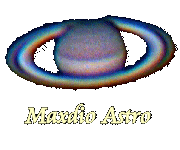Skyscapes
A modest picture gallery of the sky, as it can be presented to an observer without the aid of special
optical instruments. All the photos on this page were made with simple cameras and 50mm focal length
lenses or, at best, modest telephoto lenses. The only license that was granted was to compensate for
the rotation of the Earth thanks to the motorized mounts for astronomical use.
The purpose of this page is to remember the beauty of our sky and changing landscapes which can offer,
together with the demonstration that even with minimal equipment we can be taken beautiful and
suggestive astronomical photos.

July 26, 2000; The Milk Way in Sagittarius constellation
Photo made with Olympus OM-1 camera and 50mm lens, was used a Kodak EPH 1600 ISO film and an
20 minutes exposition.
Photo take from here.
Photo by Massimo Dionisi
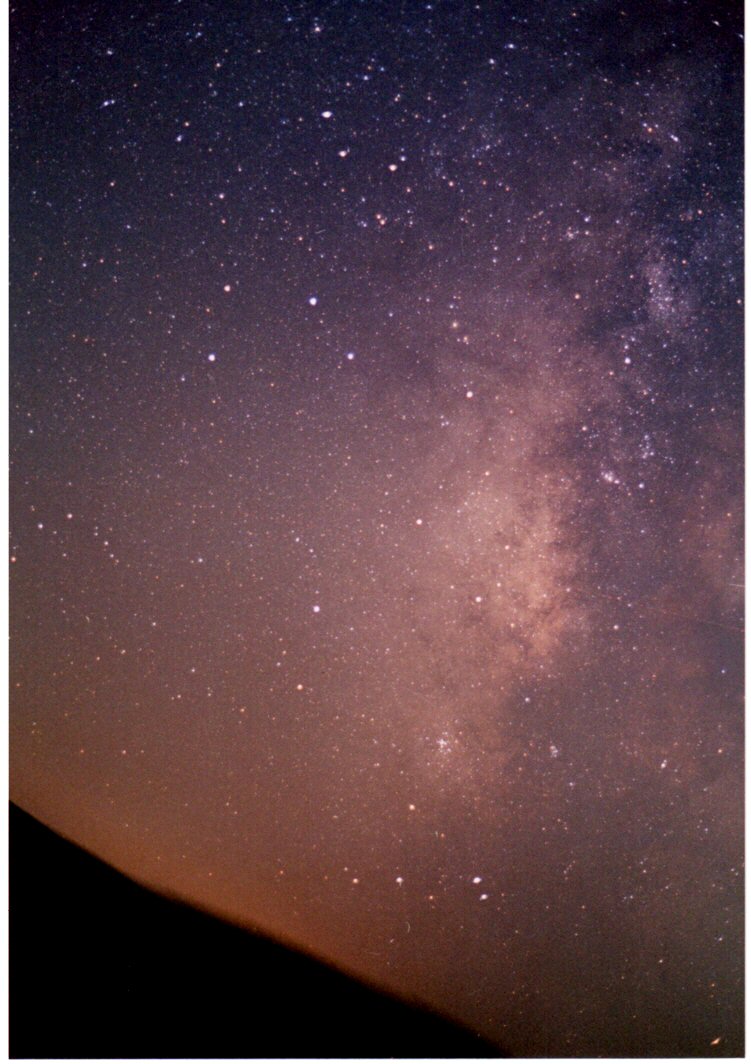
Another large field image of Milk Way in Sagittarius constellation; is also visible a part of Scorpius
constellation (the "tail of the scorpion"). Also in this picture are clearly visible a great number of
nebulae and star cluster.
Photo by Massimo Dionisi
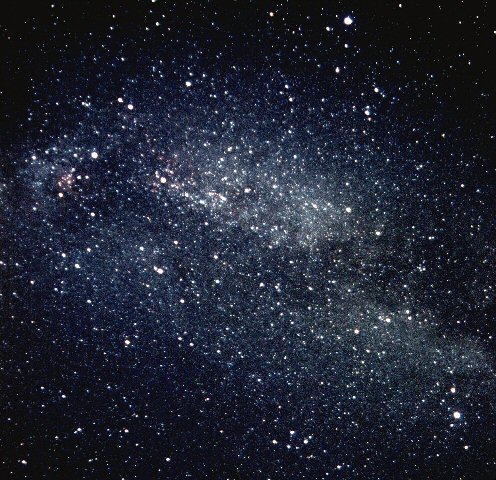
On summer nights the sky is dominated by three well-known constellations: Lyra, Cygnus and Aquila.
The three main stars of these constellations are, respectively, Vega, Deneb and Altair creating a celestial
configuration ("asterism") commonly called "Summer Triangle". In this picture you can recognize it in the
background of a brilliant Milky Way, full of stars and nebulae. On the left of the picture, it is clearly
visible the North America Nebula
and a large number of small emission nebulae near the center of Cygnus.
Photo take from here.
Photo by Massimo Dionisi
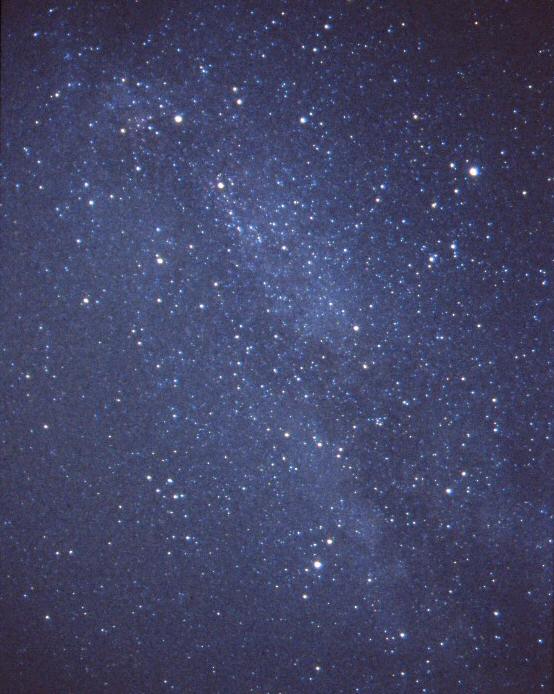

Two pictures taked in the same night and that show two contiguos region of the sky. The first, on the left,
includes 3 major constellation: Cygnus, Aquila and Lyra; the second is centered on Alpha Aquilae, named
Altair and showing also the little Delphinus constellation (on the left of Altair) e Scutum (on the
lower right) with a vast region of bright and dark nebulae.
Photo by Massimo Dionisi

Taurus constellation with the Pleiades
open cluster and the planets Venus, Jupiter and Saturn. Photo taken just before sunset with an Olympus OM-1
camera and 50mm lens
Photo take from here.
Photo by Massimo Dionisi
The area of the northern celestial pole is the backdrop for a telecommunications antenna. This photo was
made from the town of Olbia (Sardinia, Italy) on 28 July 2008. The place was full of light pollution,
despite this the sky was clear and transparent. 5 seconds of exposition to ISO 1600 with a Canon EOS 300D.
Photo by Massimo Dionisi
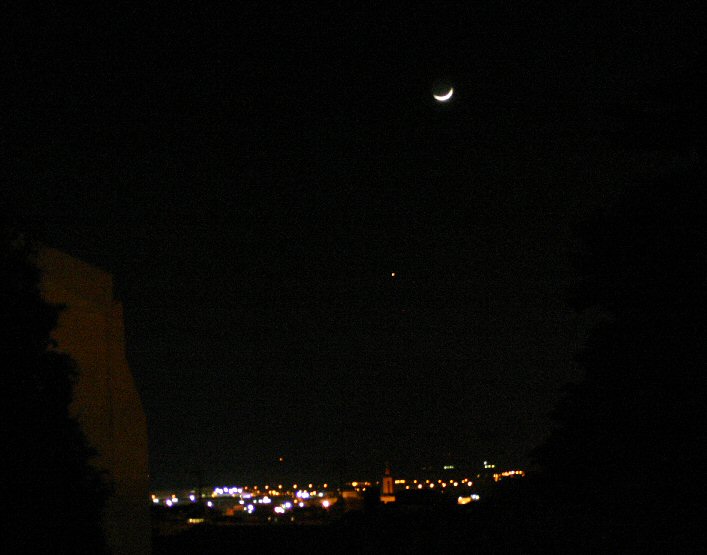
The Moon and Venus, photographed April 16, 2010 at 18:39 UT (20:39 local time) from the town of Sassari
(Sardinia, Italy). Canon EOS 300D to an eighth of a second to 1600 ISO to f/4; the objective had a focal
length of 55mm. Below the skyline of Sassari.
Photo by Massimo Dionisi
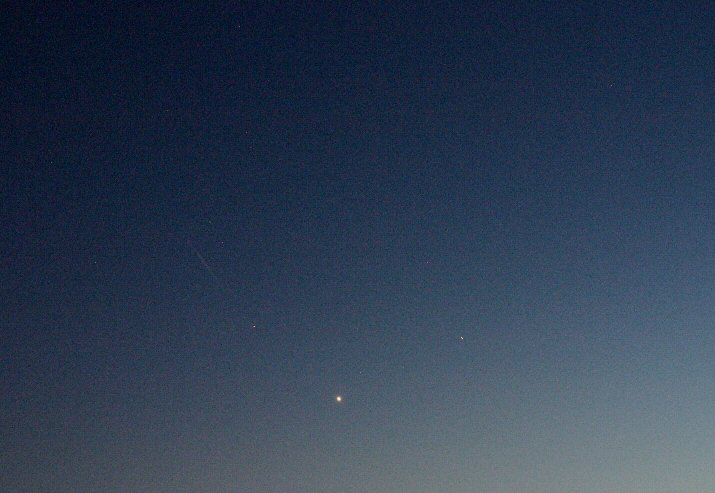
Venus, Mars and Saturn under the date of August 11, 2010 at 18:19:52 UT (20:19:52 local time) from Sassari
(Sardinia, Italy). Exposition of 10 seconds to 1600 ISO with Canon EOS 300D camera and 55mm lens to f/18.
On the left is visible a meteor trace; the picture was taken in a time near to Perseids meteor stream peak.
Photo by Massimo Dionisi

After about half an hour the previous photo, the same celestial configuration with the same actors. The sky
is a little darker and is now visible also the star Gamma Virginis; while the limit of visibility the star
Eta Virginis, in the center of the triangle formed by Venus, Mars and Saturn.
Canon EOS 300d and lens focal length from 55mm to 1600 ISO, 10 seconds of exposure. Also visible in the
photo is the trellis system of illumination of the soccer stadium of Torres; fortunately that night were
not scheduled games.
Photo by Massimo Dionisi
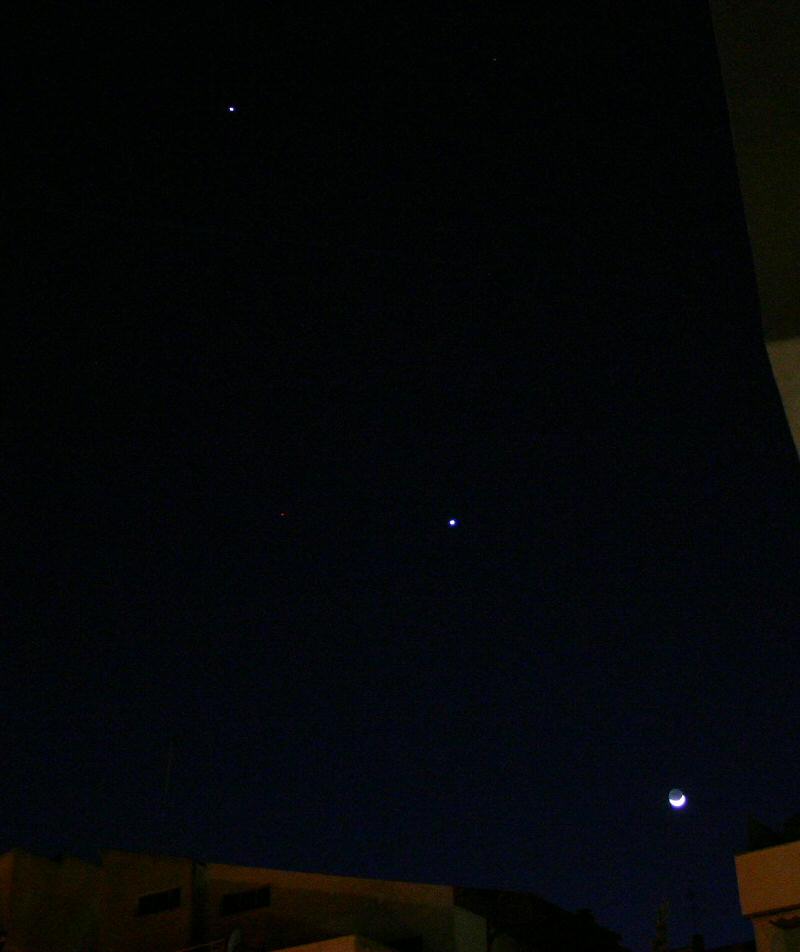
The celestial alignment of Moon, Venus and Jupiter in the evening twilight of February 24, 2012 to the time
of 18:09 UT (19:09 local time or CET).
Shot from inside the city of Sassari (Sardinia, Italy), the exposure was only half a second with an aperture
of f/3.5 lens on a 55mm focal length; Canon EOS 300D.
Photo by Massimo Dionisi
The sunset from Capo Caccia (Alghero, Sardegna)
under the date of March 25, 2012.
Photo by Massimo Dionisi
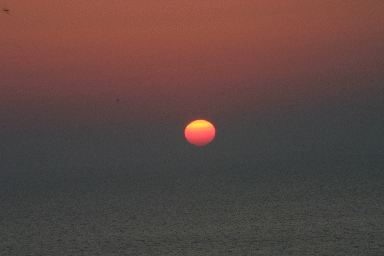
The sunset: our Sun that dips in the Mediterranean Sea.
A sequence of twenty images processed and converted into "gif" format. Atmospheric refraction seems to
deform the Sun, which seems to become a "drop" that wants to touch the surface of the sea. The absorption
due to atmospheric layers colors the sun of red. The horizon is completely free and the only limit is your
imagination.
Photo by Massimo Dionisi
The evening twilight seen from Capo Caccia (Alghero, Sardegna)
under the date of March 25, 2012.
Photo by Massimo Dionisi
A photo the day before the New Moon; low on the east horizon the very thin lunar sickle stands out
against the background of a sky near dawn. Only three percent of the lunar surface is illuminated by the
Sun.
Photo by Massimo Dionisi
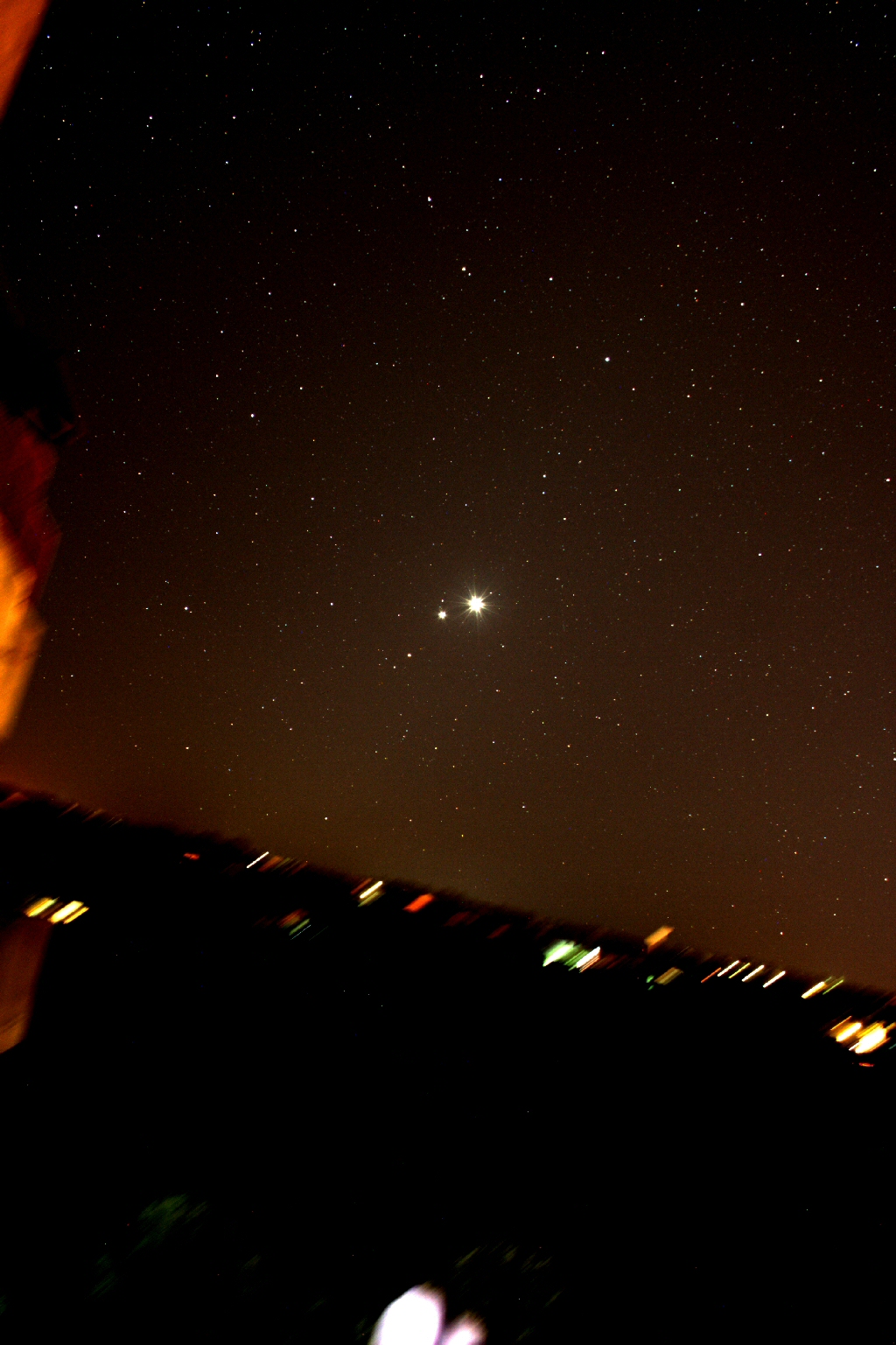
Venus, Mars and Jupiter in a triple and rare planetary alignment on the morning of October 24th 2015,
just before dawn. The image was taken with a Canon EOS 350D camera and a lens
of 18 mm focal length with an exposure of 5 minutes at 800 ISO. The camera compensated for the
Earth rotation movement, for this reason the details and the lights of the terrestrial panorama
turns out to be wavy.
Photo by Massimo Dionisi
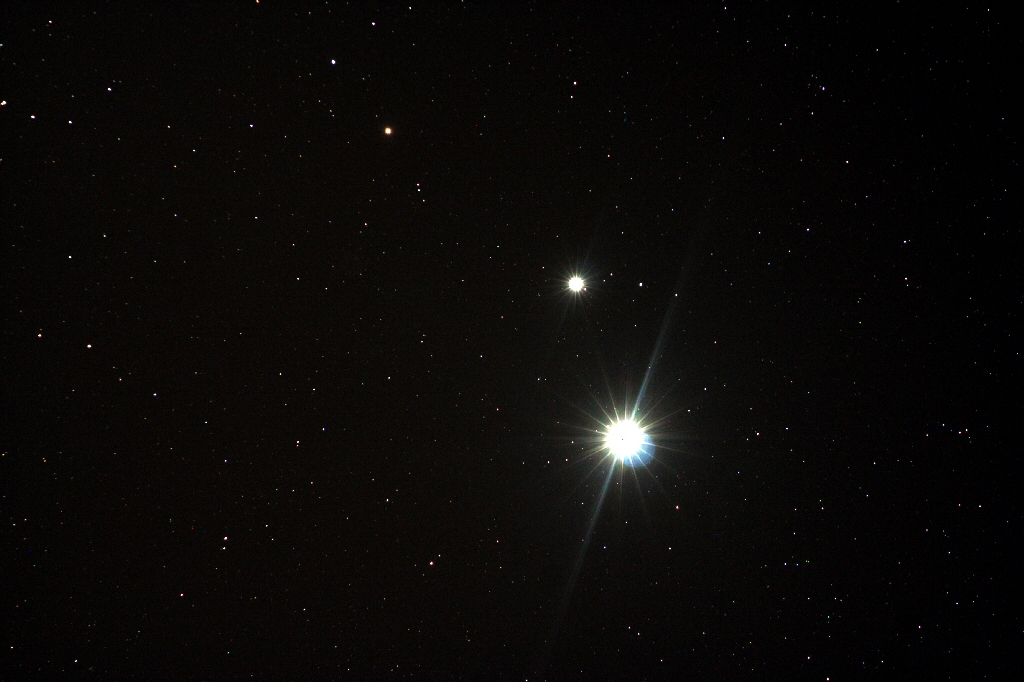
A second photo of the close alignment of the three planets already taken in the previous photo,
this time performed with a telephoto lens but with the same exposure of 5 minutes at 800 ISO.
Also in this case a motorized equatorial mount was used to compensate for the Earth rotation movement.
The approach of these three planets was only due to the perspective effect, ie from the point
of view of the terrestrial observer; in reality the distance from the Earth of these three objects was
very different: Venus was at 101 million km away, Mars at 337 million km and Jupiter at 906 million km.
Photo by Massimo Dionisi
A "close encounter" in the sky between the Moon, Venus and Jupiter, obviously only apparent, in the
evening of January 2, 2017. The photo was taken with a normal 50mm focal length lens mounted on a
Canon 350D camera; all supported by a normal photographic easel without then compensate for the
Earth's rotation movement. In these conditions it is essential to perform exposures on one side the
shortest possible and on the other long enough to record on the CCD sensor the weak subjects to
photograph.
Photo by Massimo Dionisi
A few minutes later the previous photo the clouds begin to peep into the sky, creating the risk of
compromising the photo session. Instead you can take advantage of the cumbersome presence cloudy to
your advantage, trying to capture even more suggestive images.
With an exposure of only one second at 1600 ISO and always with the same instrumentation used for
the previous photo, the overall effect is quite satisfactory.
Photo by Massimo Dionisi
Keeping an exposure of one second and the number of ISOs at 1600, we looked in this photo for
increase the final magnification slightly, bringing the focal length of the lens to 135mm. Both the
Moon and Venus, at the bottom, are not wavy and the clouds help to create an interesting scenography.
Photo by Massimo Dionisi
Almost a month after the three previous photos, exactly the evening of January 31, 2017, the sky in
west direction replicates the spectacle of the apparent close encounter between the three celestial
bodies.
With an exposure of a quarter of a second to ISO 1600 and a resulting focal length of 114mm, the Moon
(below), Venus (right) and Jupiter (above) are taken, all together, as in a photo of group.
Photo by Massimo Dionisi
On the other side of the sky, to the east, on the evening of 2 January 2017, the large constellation
of Orion was rising in the sky, a little disturbed by passing clouds. Using a lens of 50mm focal length,
1600 ISO and a 10 second exposure it was possible to record many of the its main stars, including the
three that make up what is popularly called "Orion Belt" and the group that form the "Sword of Orion".
At the center of the "Sword" you can clearly perceive a nebulosity: it is the great Nebula of Orion
(Messier 42) whose detailed photos can be viewed in the "Deep Sky" section.
The clouds, rather than disturbing, seem to give an even more realistic effect to the photo.
Photo by Massimo Dionisi
